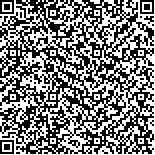| Quote
: |
周家谭,卢健棋,闫涛,庞延,潘朝锌,毛美玲,卢荷娇,罗文宽.中药干预NLRP3炎性小体通路防治心血管疾病的研究进展[J].湖南中医药大学学报英文版,2023,43(10):1932-1940.[Click to copy
] |
|
| |
|
|
| This paper
:Browser 1036times Download 482times |
| 中药干预NLRP3炎性小体通路防治心血管疾病的研究进展 |
| 周家谭,卢健棋,闫涛,庞延,潘朝锌,毛美玲,卢荷娇,罗文宽 |
| (广西中医药大学, 广西 南宁 530000;广西中医药大学第一附属医院, 广西 南宁 530000;国家中医心血管病临床医学研究中心分中心, 广西 南宁 530000;南宁首大医院, 广西 南宁 530000) |
| 摘要: |
| 炎症是引发心血管疾病的主要驱动因素,NOD样受体热蛋白结构域相关蛋白3(NOD-like receptor protein 3, NLRP3)炎性小体通路在心血管炎症中起着关键作用,并参与多种生理病理过程,在动脉粥样硬化、高血压病、心肌炎、心肌缺血再灌注损伤、急性心肌梗死甚至心力衰竭等心血管疾病中发挥重要作用。心血管疾病多属本虚标实之证,气虚为本,痰浊、血瘀为标,治当以“扶正祛邪”为法,而炎症介质属于中医学“毒邪”范畴,毒邪侵袭可导致脏腑功能紊乱,痰浊血瘀内生,气血阴阳耗损。补虚、开窍、清热、活血化瘀、理气、化痰类中药的复方及其有效成分可通过抑制NLRP3炎性小体通路的活性及其相关蛋白的表达,减轻炎症反应,抑制细胞焦亡,从而有效防治心血管疾病。 |
| 关键词: 中药 心血管疾病 NLRP3炎性小体通路 中药复方 中药有效成分 |
| DOI:10.3969/j.issn.1674-070X.2023.10.029 |
| Received:May 04, 2023 |
| 基金项目:国家自然科学基金项目(82160887);国家中医药管理局国家中医临床研究基地业务建设科研专项课题(JDZX2015146);广西省自然科学基金项目(2021GXNSFBA196018,2021GXNSFAA220111);广西省岐黄学者培养项目(2022015-003-02)。 |
|
| Research progress of Chinese medicines intervention in NLRP3 inflammasome pathway to prevent and treat cardiovascular diseases |
| ZHOU Jiatan,LU Jianqi,YAN Tao,PANG Yan,PAN Chaoxin,MAO Meiling,LU Hejiao,LUO Wenkuan |
| (Guangxi University of Chinese Medicine, Nanning, Guangxi 530000, China;The First Hospital of Guangxi University of Chinese Medicine, Nanning, Guangxi 530000, China;Branch Center of National TCM Clinical Research Center for Cardiovascular Diseases, Nanning, Guangxi 530000, China;Nanning Shouda Hospital, Nanning, Guangxi 530000, China) |
| Abstract: |
| Inflammation is the main driver of cardiovascular disease. The NOD-like receptor protein 3 (NLRP3) inflammasome pathway plays a key role in cardiovascular inflammation and participates in a variety of physiological and pathological processes. It plays an important role in cardiovascular diseases such as atherosclerosis, hypertension, myocarditis, myocardial ischemia-reperfusion injury, acute myocardial infarction and even heart failure. Cardiovascular disease mostly belongs to the syndrome of deficiency in origin and excess in superficiality. Qi deficiency is the root cause, phlegm turbidity and blood stasis are the superficial causes. The treatment should be based on 'strengthening the body resistance and eliminating pathogenic factors', while inflammatory mediators belong to the category of 'toxin evil' in traditional Chinese medicine. The invasion of toxin evil can lead to the disorder of viscera function, the endogenesis of phlegm turbidity and blood stasis, and the depletion of qi, blood, yin and yang.The compound and its effective components of traditional Chinese medicine for tonifying deficiency, inducing resuscitation, clearing heat, promoting blood circulation and removing blood stasis, regulating qi and resolving phlegm can reduce the inflammatory response and inhibit cell pyroptosis by inhibiting the activity of NLRP3 inflammasome pathway and the expression of related proteins, so as to effectively prevent and treat cardiovascular diseases. |
| Key words: Chinese medicines cardiovascular disease NOD-like receptor protein 3 inflammasome pathway compound formula of Chinese medicines active ingredients of Chinese medicines |
|

二维码(扫一下试试看!) |
|
|
|
|


